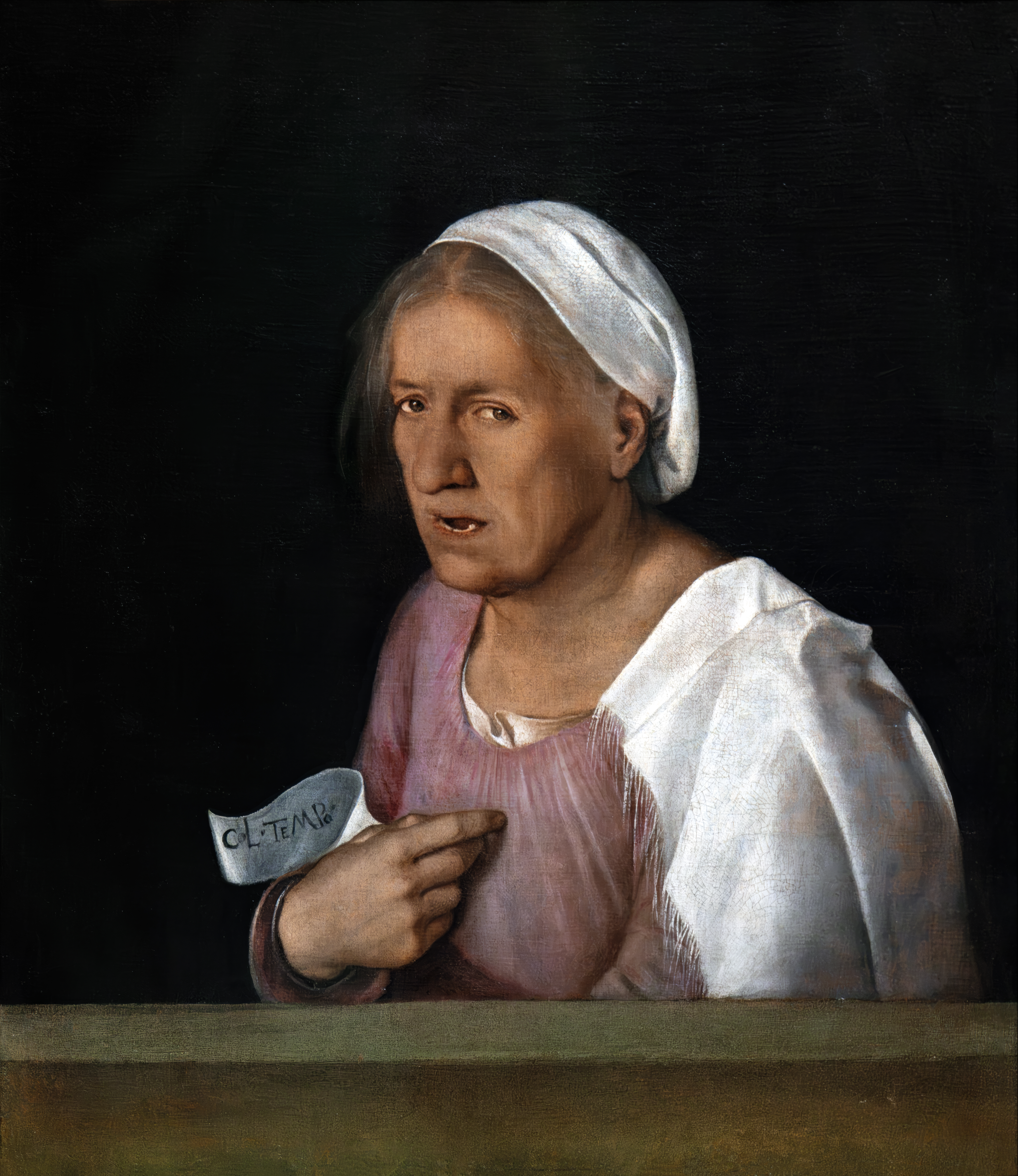Avarice (Dürer, Vienna) on:
[Wikipedia]
[Google]
[Amazon]
''Avarice'' (German: ''Allegorie des Geizes'') is a small (35 × 29 cm) oil-on- Intended to represent both
Intended to represent both
limewood
''Tilia'' is a genus of about 30 species of trees or bushes, native throughout most of the temperate Northern Hemisphere. The tree is known as linden for the European species, and basswood for North American species. In Britain and Ireland they ...
painting of 1507 by Albrecht Dürer
Albrecht Dürer (; ; hu, Ajtósi Adalbert; 21 May 1471 – 6 April 1528),Müller, Peter O. (1993) ''Substantiv-Derivation in Den Schriften Albrecht Dürers'', Walter de Gruyter. . sometimes spelled in English as Durer (without an umlaut) or Due ...
(1471–1528). The work is found on the reverse of his '' Portrait of Young Man''; it has been speculated, though it is impossible to know, that they were intended to form part of a diptych. ''Avarice'' is allegorical and serves as a warning at both the transience of life and the ultimate worthlessness of earthly fortune. It is generally grouped, along with '' Melencolia I'', as one of Dürer's vanitas images.
 Intended to represent both
Intended to represent both avarice
Greed (or avarice) is an uncontrolled longing for increase in the acquisition or use of material gain (be it food, money, land, or animate/inanimate possessions); or social value, such as status, or power. Greed has been identified as undes ...
and the passing nature of youthful beauty, the woman is shown in half-length, painted in thick impasto.Sturge Moore, 207 She has long and straight blond hair, glazed eyes, a long nose, a pinched jaw and a mouth with only two remaining teeth, which is twisted in a scornful laugh. Her visible right arm is muscular and out of proportion to the rest of her body, while a dark tuft of hair sprouts from her underarm. Only her hair and the regular and almost noble outlines of her face hint at former beauty. The intense focus of the image is achieved by tight cropping and the contrast between the lush colouring of the woman's gown and hair against the flat black background.Silver & Smith, 246
Art historians have compared the work to a Giorgionesque canvas ''Col tempo'' (''With age''), with which it shares obvious thematic similarities, while Dürer's use of impasto and the rich colouring in the foreground display a debt to the Venetian school. The art historian T. Sturge Moore suggests that Dürer may have wanted to show that he could paint like Giorgione.Sturge Moore, 207–208 Others believe that the work is a satire on a sitter who had not paid him as much as he might have wished for an earlier portrait. However, given the artist's financial situation at this time, it seems unlikely that he would have deliberately offended potential patrons or customers. Writer Jessie Allen discounts this theory and believes that the work was likely unable to attract a buyer and to save money, Dürer used the other side of the canvas to create a commercially viable image.Allen, 105 The work is often seen as unfinished and is sometimes referred to as a sketch.
''Avarice'' is held in the Kunsthistorisches Museum
The Kunsthistorisches Museum ( "Museum of Art History", often referred to as the "Museum of Fine Arts") is an art museum in Vienna, Austria. Housed in its festive palatial building on the Vienna Ring Road, it is crowned with an octagonal do ...
, Vienna. It is in good condition, and the colours retain their vibrancy.
It is titled "Allegorische Frauenfigur/Allegorical Female Figure" by the Kunsthistoriches.
Notes
Sources
* Allen, Jessie. ''Albert Dürer''. Kessinger, 2005. * Bailey, Martin. ''Dürer''. London: Phidon Press, 1995. * Silver, Larry & Smith, Jeffrey Chipps. ''The Essential Dürer''. University of Pennsylvania Press, 2010. * Sturge Moore, T. ''Albert Dürer''. Bastian Books, 2008. * Thausing, Moriz. ''Albert Dürer: His Life and Work, Part 1''. Kessinger Publishing, 2003. {{DEFAULTSORT:Avarice Paintings by Albrecht Dürer 1507 paintings 16th-century portraits Paintings in the Kunsthistorisches Museum Paintings of women